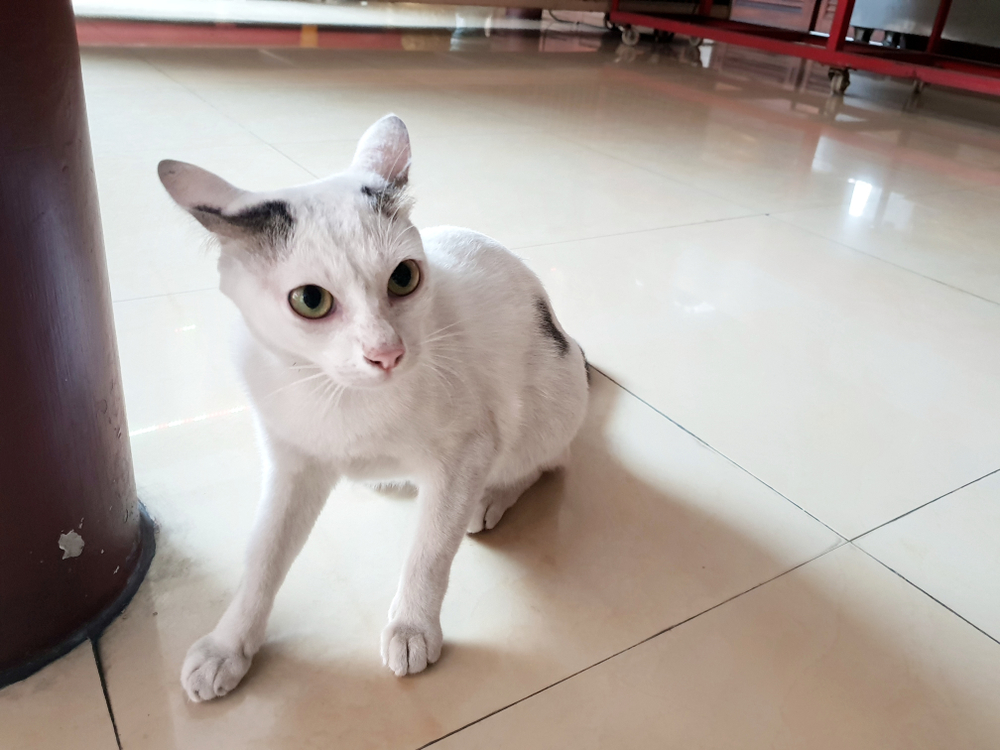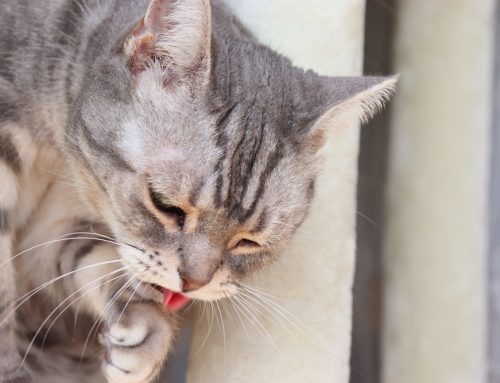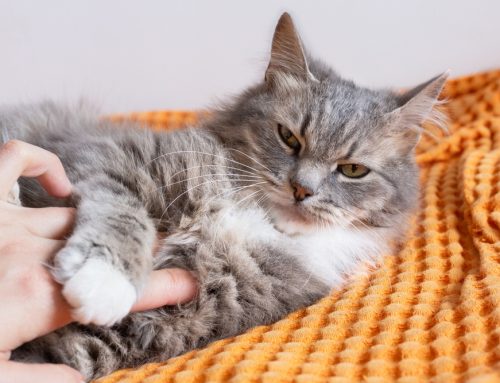Our furry companions are well-known for their stoic personalities, complaining about nothing more than an empty food bowl or too few ear scratches. But, that charming aspect of animal behavior can be detrimental to their health. By not cluing us in to feelings of pain and discomfort, pets can silently suffer for far too long without treatment. Help your pet avoid pain by monitoring her for these nine subtle signs of suffering.
#1: Changes in eating or drinking habits
A loss in appetite or decreased drinking can indicate discomfort in pets. Oral pain, whether it’s from gingivitis, a fractured tooth, or an abscess, can lead to decreased appetite. Pets with dental disease may be able to tolerate only canned or softened food rather than hard, dry kibble or chews. A decreased appetite can also indicate more generalized pain, such as osteoarthritis or cancer. Similar to people, pets don’t have much of an appetite if they’re feeling under the weather.
#2: Changes in sleeping patterns
A pet who is not feeling well is likely to sleep more while her body heals. She may also be unable to move around well, and be less active. If your pet can’t sleep through the night because of pain and discomfort, she may sleep only in short bursts, until her discomfort wakes her again.
#3: Aggressive or antisocial behavior
Pain can abruptly change your pet’s personality. A Lab who normally loves life or a cat who enjoys being groomed may shun their normal activities and human contact if they’re experiencing discomfort. Dogs would rather lie down on their cozy beds than join in family time or a game of fetch. You may not see your cat much at all if she’s uncomfortable—search under the bed, in closets, or behind furniture, and you will likely find your painful pet. If a pet is exceedingly uncomfortable, she may snap and lash out in pain, and growl, hiss, swat, or bite to warn you to stay away from painful areas during handling or grooming.
#4: Heavy panting or changes in breathing patterns
Panting is a normal behavior in dogs, but in some cases, it can be a sign of pain. Uncomfortable pets pant without exertion or hot weather, and when they’re resting. Rapid, shallow breaths are also a sign of pain—think of how a woman in labor breathes.
#5: Excessive licking or chewing
Some pets, especially high-energy dogs, fixate on a spot and lick or chew obsessively. Licking and chewing can also be caused by allergies, skin infections, or flea infestations, but can occasionally indicate pain. Bony prominences or joints, such as the wrists, knees, and hips, are the areas commonly seen with saliva stains or crunchy fur. Pets in pain attempt to ease the pain through excessive grooming, leaving behind trademark signs.
#6: Unusual vocalization
Pets experiencing discomfort may not always suffer in silence. They typically will moan and groan with pain, and dogs may also whine, growl, or howl. Cats will let you know about their discomfort with excessive meowing or yowling.
#7: Changes in body position or posture
Pets show pain in different ways, depending on the body part affected. Back pain can mimic abdominal pain, making it challenging to distinguish between the two. Pets suffering from a bulging intervertebral disc or pancreatitis may present with a hunched appearance, arching their backs and tucking in their bellies.
#8: Signs of agitation

Shaking, trembling, or pacing can indicate to a pet owner that her pet is uncomfortable. Restless behavior demonstrates that a pet cannot relax and is suffering from some form of discomfort.
#9: Mobility issues
Changes in mobility are some of the most easily identified signs of pet pain that owners pick up on. The changes are often chalked up to old age and slowing down, but osteoarthritis is usually the culprit. Changes in mobility are numerous in painful pets:
- Limping
- Favoring a limb
- Rising slowly
- Lying down with difficulty
- Avoiding stairs
- Inability to jump on furniture or into vehicles
Since changes in mobility are one of the most common indicators of pet pain, don’t ignore a difference in your pet’s gait.
Do not attempt to treat your pet’s pain yourself. Many human medications—and those prescribed for other pets—can be harmful to, or potentially kill, your pet.
If your pet is suffering from discomfort, schedule an appointment to get her started on a pain-free path.








Leave A Comment